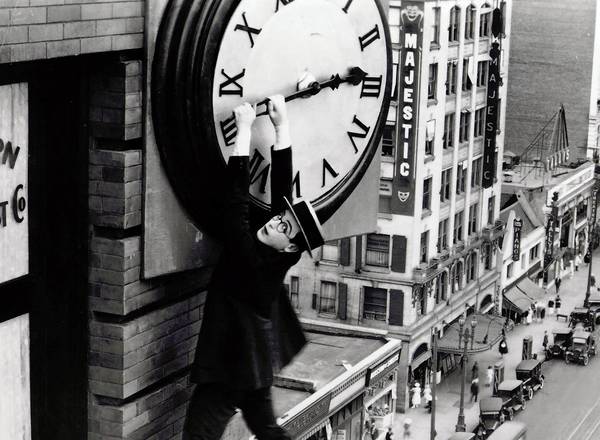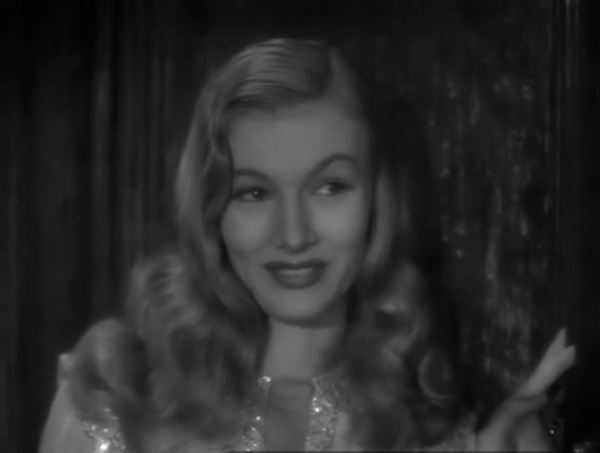I’m 31 movies into my resolution to watch 50 movies made before 1950 in 2018 [see Part I | Part II | Part III | Part IV]. I faltered a bit due to vacations, but am pretty much back on track. If I only watch one qualifying movie a week until the end of the year, I’m only 2 movies behind. Considering that I only really started doing this challenge in March or so, I should be good. Further, I expect a fair amount of my 6 Weeks of Halloween horror movie marathon to qualify, such that it’s quite possible I’ll surpass 50 early. Anywho, let’s dive into the most recent batch:
- The Glass Key (1942) – It’s Yojimbo meets Miller’s Crossing, only this came before both. The movie opens with Veronica Lake slapping Alan Ladd, who then asks one of his flunkies to meet with Lake’s father. The flunky demurrs, so Ladd throws him through a window. My kinda movie.
Film noir with the standard complement of crooked politicians, gangsters, henchmen, and murder! Above average, with good performances all around and the occasional brilliant turn of phrase. For instance, at one point Ladd is referred to as “a pop-eyed spaghetti bender”, which is a good one. Definitely curious as to the extent of its influence, but it’s clearly a precursor to lots of stuff and well worth checking out. **1/2
- Pitfall (1948) – Dick Powell plays a family man and insurance investigator who sets out to repossess a bunch of fraudulent belongings from a woman. She’d fallen for the wrong guy, who is now serving time. Powell’s finding the routines of day to day life are driving him nuts, and he starts to fall for the girl, who represents escape and adventure, of a sort. Unfortunately, Powell had made the mistake of enlisting a PI played by Raymond Burr to help find her in the first place, and Burr’s character has not-so-honorable aims of his own. This starts slow and it’s not particularly clear where it’s going for a while, but once it gets there, things get more interesting. Again, not exactly top tier noir, but perhaps a bit above average. **1/2
- The Most Dangerous Game (1932) – I don’t remember when I first read the Richard Connell short story this movie is based on, but it’s long been a mainstay of middle/high school English classes, and a pretty great example of narrative structure. As such, there’s been tons of official and unofficial adaptations of this story. Even if you haven’t read it, you’ll probably recognize the premise: a traveler becomes shipwrecked on an island. It turns out that the island is the home of a reclusive and eccentric man who, while initially welcoming, turns out to be a madman who hunts human beings for sport. The rest of the story is a dangerous game of cat and mouse (or cat and also-cat, if you will). There are countless examples of films inspired by or directly adapting this, but this appears to be the first. Directed by Ernest B. Schoedsack and Merian Cooper, the team that would go on to make King Kong a year later (even going so far as to use the same sets and actress Fay Wray), this film is a straightforward, relatively faithful adaptation. Some elements were added (notably a love interest) and the specific traps and action sequences are padded out a bit, but it’s otherwise pretty accurate. Joel McCrea is sufficiently heroic, while Leslie Banks chews the scenery as the villainous madman, certainly providing a template for future villainy. Visually the film has a nice foggy atmosphere and the villain’s castle again serves as something of a template for evil lairs. The actual action is decent enough for its time, but a little staid to the modern eye. Clocking in at a svelt 63 minutes, it still moves quickly though. Not the “must-watch” classic that King Kong would become, but certainly worth a watch for students of cinema. ***
- Safety Last! (1923) – Harold Lloyd was sorta the forgotten third silent comedy genius (behind Charlie Chaplin and Buster Keaton), but this film represents his masterpiece and includes the one set piece we’ve all seen (and which has, yes, influenced a ton of other films). Lloyd’s main character was called Glasses (because he, um, wore glasses), and in this movie he leaves for the big city to start his blue-collar career, promising his sweetheart that he’ll call for her once he starts making the big bucks. Naturally, he’s stuck working a menial job at a department store that can’t exactly live up to his promises. The first half of the film is an unending series of clever physical stunts, pratfalls, and general comedic gags, but the highlight is the final setpiece where Glasses climbs the outside of the department store in a desperate bid for publicity. It’s a genius sequence, and features new obstacles at every floor climbed, most infamously the one where he hangs off of the oversized clock on the outside of the building (a gag referenced repeatedly throughout film history).

Silent comedies tend to fare better to modern viewings than more dramatic fare, but humor doesn’t always translate across the decades. This is nearly a century old, but the comedy holds up well. Lloyd doesn’t have quite the cache of Chaplin or Keaton, but apparently he’s only got himself to blame for that one: “Lloyd kept copyright control of most of his films and re-released them infrequently after his retirement” and not so much because of lack of interest. He wouldn’t let theaters use piano to accompany the films (preferring an organ) and charged exorbitant amounts for television airings. As a result, Chaplin and Keaton enjoyed a more favorable reputation and name recognition. After his death, there was renewed interest, and more recent restorations have helped Lloyd along. At least, among film dorks, as most people these days wouldn’t dream of watching a silent film. Safety First! would be a decent one to start with though. ***
- Scarlet Street (1945) – Edward G. Robinson plays an ordinary man going through a mid-life crisis when he inadvertently rescues a woman from an attack on the street. He befriends her, but she’s under the impression that he’s a rich artist (haha) and sets about conning him for his fortune. This starts awfully slow and doesn’t really pick up until the end of the second act. Then things go completely bananas in the final act. As it turns out, the slow first half is really just a slow ratcheting of tension. Stylistically, the film becomes more adventurous as it goes as well (the beginning is not what you’d expect from a filmmaker with the stature of Fritz Lang), with a wonderfully bonkers, very dark, Edgar-Allen-Poe-like ending (that’s more like it). I won’t spoil anything, but this is worth hanging in there for fans of melodrama/noir mixtures. ***
- Bicycle Thieves (1948) – This is one of those Criterion Collection/Janus Arthouse films that I’ve always, well, “dreaded” isn’t quite the right word, but it’s not the sort of thing that’s necessarily a feel-good piece. It tells the story of Antonio, an unemployed man in post-war Italy who finally gets a job. The only catch is that he needs a bicycle to perform the job, so when his bicycle is stolen on his first day at work, he goes into a panic. The rest of the film is a desperate search for the stolen bike, with his son tagging along. It’s an astoundingly empathetic film, and one of those situations where even these sorts of small stakes seem massive when contextualized like this (lots of modern blockbusters have planet-destroying stakes, but you don’t feel them anywhere near as much as this one man’s need to find that damned bike). Stylistically devoid of flourishes or showiness, its restraint perfectly matches the story being told, lending the film a realism not common for its era (it feels much more modern than it actually is). Apparently these weren’t even professional actors, but this only enhances the realism, especially with the child actor, who does a phenomenal job (and stays appropriately kid-like throughout). It’s heartbreaking, but in the best way possible (this is not something I’m accustomed to saying). ***
So there you have it. We’re entering 6 Weeks of Halloween season, so these 50 Under 50 movies will probably be incorporated into those posts for a while, but we’ll surely be back later in the year to finish this sucker off.
